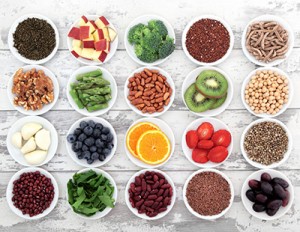 Have you ever stopped to read the label of a TV dinner? Chances are, you cannot pronounce half of the ingredients on the list, much less know what they actually are. Many individuals looking to improve their health and diet are turning to organic options, but it comes with a heavy cost. Eating healthy is not cheap, so it is best to understand what exactly it means to eat organic and when is the best time to do so.
Have you ever stopped to read the label of a TV dinner? Chances are, you cannot pronounce half of the ingredients on the list, much less know what they actually are. Many individuals looking to improve their health and diet are turning to organic options, but it comes with a heavy cost. Eating healthy is not cheap, so it is best to understand what exactly it means to eat organic and when is the best time to do so.
What Does Organic Mean?
There are quite a few labels thrown around on food these days. The easiest to interpret is “100% Organic,” as it is exactly what it says. Food that is 100% organic contains no synthetic ingredients and will often come with the U.S. Department of Agriculture’s (USDA) organic seal. If the food item you are inspecting simply says it is “organic”, then it is made with at least 95% organic ingredients; it is also likely to have the USDA organic seal as well. The last label you are likely to run across is “made with organic ingredients.” This food is made up of at least 70% organic products, but is not allowed to carry the USDA organic label.
The USDA organic seal is a decent benchmark to base your organic purchase on as it means the produce was grown, harvested, and processed according to national organic standards. This limits the amounts of hormone exposure, pesticide use, and so on. Plus, organic produce can only be exposed to pesticides made from natural sources (i.e. not toxic chemicals).
When to Eat Organic: The Dirty Dozen
The dirty dozen get their name from the fact that they are most susceptible to pesticide residue. As such, it is best to buy these items organic. This list changes somewhat depending on who you ask; these items are on the nonprofit Environmental Working Group’s list:
- Apples
- Peaches
- Nectarines
- Strawberries
- Cherries
- Pears
- Grapes
- Celery
- Spinach
- Sweet bell peppers
- Lettuce
- Potatoes
When Not to Eat Organic
Some individuals cannot fathom eating anything other than organic foods; others would love to eat all organic, but cannot substantiate the cost. Thankfully, there are a number of foods items that are least likely to carry pesticide residue. These items are not necessarily worth the added cost of buying organic:
- Papaya
- Bananas
- Kiwi
- Mango
- Pineapple
- Peas (frozen)
- Asparagus
- Broccoli
- Cabbage
- Corn (frozen)
- Avocado
- Onions
Ways to Save and Organic Alternatives
Buying in bulk will always be an excellent way to save; however, if you don’t want to have to freeze all your produce or you simply don’t have the storage space for bulk purchases, you can also try a few other tips to save some money. Coupons are an easy way to save on organic. Another simple way to cut costs is to buy organic produce that is in season. The more abundant the supply, the less the demand. This translates to lower costs for you.
You can also consider planting your own garden or buying at a local farmer’s market. While the food at a farmer’s market may not be organic, it is likely fresher than whatever is available at the grocery store. Plus, you are putting your money back into your local community rather than a corporate chain.
Another way to improve the quality of non-organic produce is to be sure to wash it for at least 30 seconds. Do not simply soak it, as this will not sufficiently remove pesticide residue. Also consider peeling any fruit and veggies that are not organic. It is true that you lose a lot of the nutrients by not eating the skin; however, that is also the most likely place for pesticides to be. Lastly, leafy vegetables (with the exception of cabbage) are often included on various dirty dozen lists (spinach, kale, lettuce, etc.). If you cannot buy these organic, remove and throw away the outer leaves. Getting enough fruits and veggies will almost always outweigh the risks of possible pesticide exposure; however, every little bit of decontamination helps, so be sure to follow the above suggestions for the most healthful produce.







